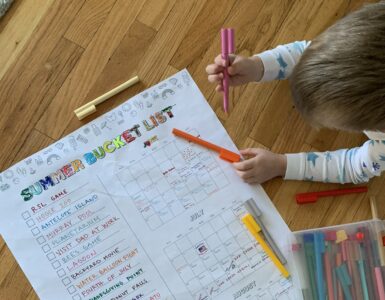Sara Parker, from Utah Central Credit Union shares some lessons to help kids learn about finances.
Here are five lessons:
Lesson 1: Help your child understand the difference between needs and wants
Kids need to know how the economy works. No, not stocks, interest rates, and world markets! I mean the basic ins and outs of a family economy. You can start when your kids are very young by helping them understand the difference between needs and wants, that money comes from working, what money looks like, and that everybody has a job (a kid’s job is to learn things, to play, and to participate in the family).
Kids can learn about budgeting from the time they are about seven.
Lesson 2: Introduce children to the value of saving versus spending.
• When giving children an allowance, give them the money in denominations that encourage saving. If the amount is $5, give them 5-1-dollar bills and encourage that at least one dollar be set aside in savings. (Saving $5 a week at 6 percent interest compounded quarterly will total about $266 after a year, $1,503 after 5 years, and $3,527 after 10 years!)
• Take children to a credit union or bank to open their own savings accounts. Beginning the regular savings habit early is one of the keys to savings success. Remember, don’t refuse them when they want to withdraw a portion of their savings for a purchase–This may discourage them from saving at all. You can also introduce children to U.S. savings bonds. Bonds are still a good value, costing one-half their face value and earning interest that in some instances will be tax-free if used for a college education. Perhaps more importantly, when given as a gift, bonds will not be spent
Lesson 3: Work hard for your money
Help your child make the connection early in life that money isn’t something freely given, but is earned through work. This isn’t to say that you should put your small children to work re-roofing your house. Instead, just emphasize that nothing comes free, even if you’re tempted to bestow upon your offspring everything that their hearts desire. If you choose to give your kids an allowance, tie it to the successful completion of certain jobs throughout the week. Or you may choose to set a market rate for various tasks.
Age-appropriate chores and rewards are the key. Younger kids can help with simple things like setting the table, where doing the job well isn’t as important as learning how to see it through. Older kids can take on more arduous jobs like mowing the lawn, in exchange for greater compensation. You may even encourage them to begin offering their services around the neighborhood.
Lesson 4: Beware of credit
Credit cards can be valuable tools in a healthy financial lifestyle, but kids need to be taught from an early age that credit cards are not free money. Here, again, you can give age-appropriate lessons in how credit works by simplifying the concepts and acting as your child’s bank.
If your child wants an item that costs $20, you’ll agree to extend credit, under the following terms.
• There is a grace period of one week, after which the interest will start to accrue.
• The interest rate is 20% per week.
• The minimum payment is $5 (or whatever her allowance may be).
How will that work out?
| Balance | Interest Accrued |
Minimum Payment |
|
| Week 1 |
$20.00 | $0.00 | $5.00 |
| Week 2 |
$15.00 | $3.00 | $5.00 |
| Week 3 |
$13.00 | $2.60 | $5.00 |
| Week 4 |
$10.60 | $2.12 | $5.00 |
| Week 5 |
$7.72 | $1.54 | $5.00 |
| Week 6 |
$4.26 | $0.85 | $5.00 |
| Week 7 |
$.11 | $0.02 | $0.13 |
| Total | $0.00 | $10.13 | $30.13 |
Lesson 5: Use regular shopping trips as opportunities to teach children the value of money.
Going to the grocery store is often a child’s first spending experience. About a third of our take-home pay is spent on grocery and household items. Spending smarter at the grocery store (using coupons, shopping sales, comparing unit prices) can save more than $1,800 a year for a family of four. To help young people understand this lesson, demonstrate how to plan economical meals, avoid waste, and use leftovers efficiently. When you take children to other kinds of stores, explain how to plan purchases in advance and make unit-price comparisons. Show them how to check for value, quality, “reparability,” warranty, and other consumer concerns. Spending money can be fun and very productive when spending is well-planned. because we obtain poor value with our purchases. Unplanned spending, as a rule, usually results in 20-30 percent of our money being wasted.
For more information, you can contact you local Utah Central Credit Union office. You can find locations through their website at www.utahcentral.com.















Add comment